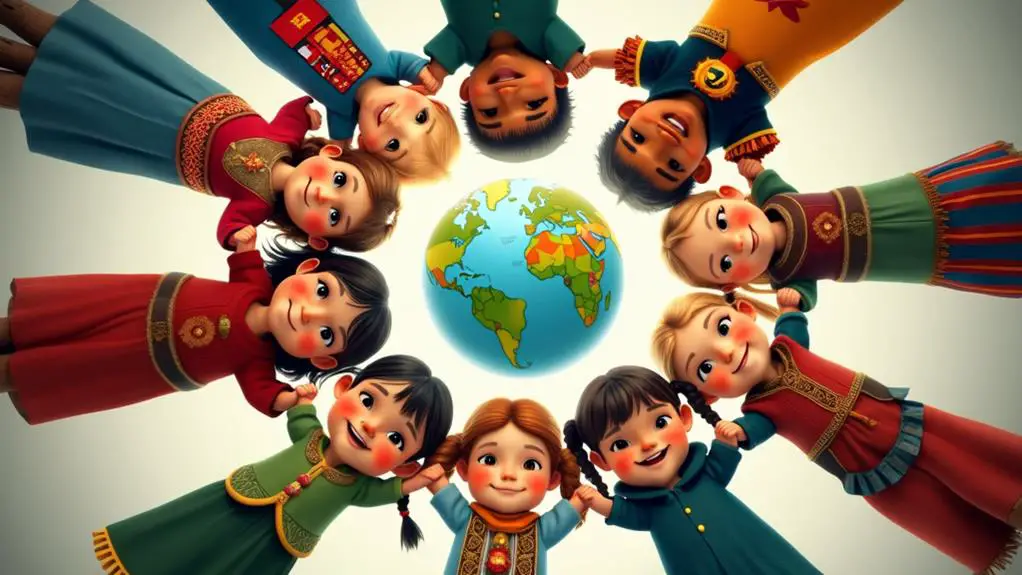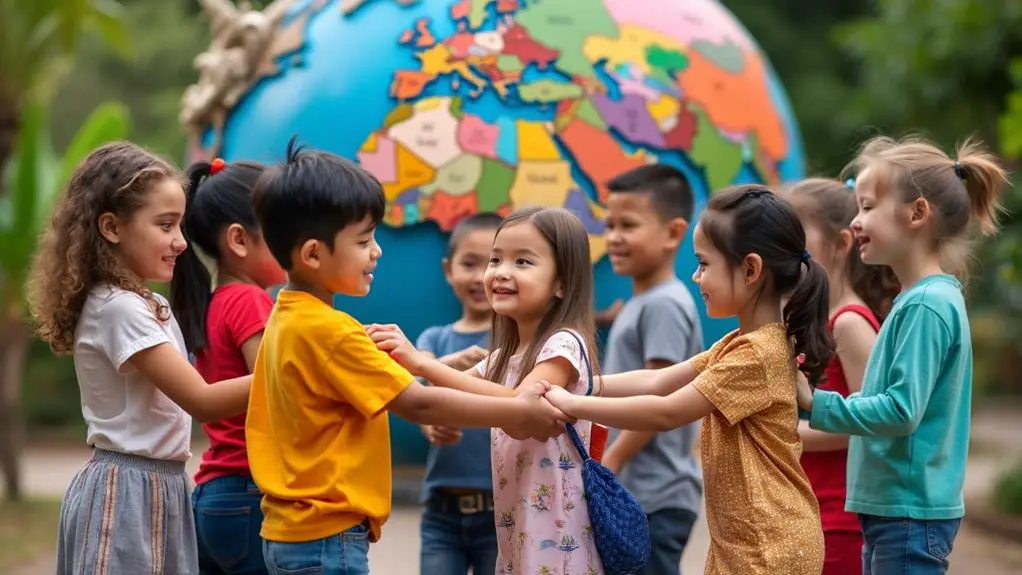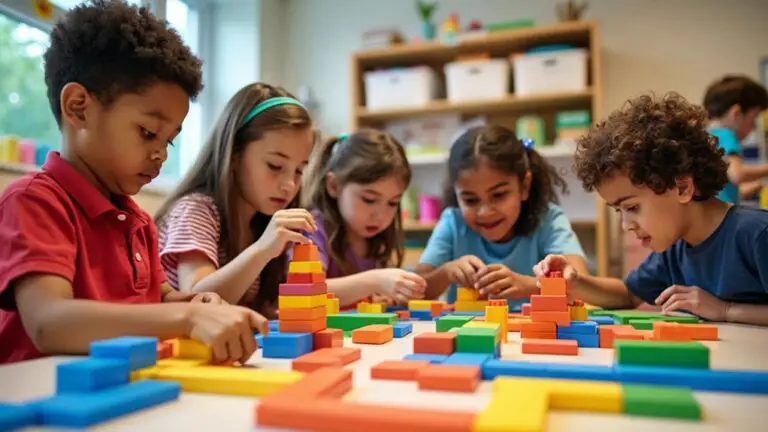Fostering Cultural Awareness in Children
I've always believed that raising culturally aware children is one of the most important gifts we can give to the next generation. As a parent and educator, I've seen firsthand how exposure to diverse cultures can shape a child's worldview and foster empathy. It's not just about learning facts or tasting new foods; it's about developing a mindset that embraces differences and celebrates our shared humanity. But how do we effectively introduce these complex concepts to young minds? And what are the long-term benefits of cultivating cultural awareness from an early age? The answers might surprise you, and they're essential for anyone invested in raising well-rounded, compassionate individuals.
Key Takeaways
- Introduce diverse children's books, music, and art to expose kids to various cultures from an early age.
- Engage in open discussions about cultural differences, promoting empathy and understanding.
- Participate in local cultural events and festivals as a family to celebrate diversity.
- Incorporate multicultural cuisines and traditions into daily life to enhance appreciation.
- Use age-appropriate teaching strategies, like animal stories for preschoolers and historical discussions for adolescents.
Understanding Cultural Diversity
Embracing cultural diversity is a cornerstone of fostering cultural awareness in children. I've found that understanding cultural diversity involves recognizing and appreciating the varied beliefs, traditions, and values of different groups. This recognition cultivates empathy and respect among individuals, especially children.
When kids interact with peers from diverse backgrounds, they enhance their social skills and adaptability, promoting inclusivity and collaboration.
It's essential to note that cultural identity clarity is linked to higher self-esteem and overall well-being in children, making it vital for their mental health. This is particularly important for youth in foster care, as about 80% experience mental health issues.
Age-Appropriate Teaching Strategies
Teaching cultural awareness to children requires tailoring strategies to their developmental stage. For preschoolers, I use animal stories to foster empathy and illustrate diversity.
With school-age children, I encourage discussions about fairness and equality, allowing them to share experiences of bullying or teasing. This helps develop awareness of social issues and promotes inclusivity.
For adolescents, I engage them in conversations about historical racial inequities and current movements, empowering them to participate in local advocacy.
To make cultural diversity enjoyable for younger children, I incorporate food, music, and art activities. These enhance their understanding and appreciation of different cultures.
I also emphasize the importance of role modeling inclusive behavior at home. By discussing diverse cultural experiences, we can positively influence children's attitudes and promote their curiosity about different ways of life.
Benefits of Cultural Awareness

From within the domain of child development, cultural awareness stands out as a powerful tool for nurturing well-rounded individuals.
I've observed how cultural awareness enhances children's social skills, allowing them to interact confidently with peers from diverse backgrounds. It's fascinating to see how exposure to various cultures increases cognitive flexibility, helping kids adapt to new environments and solve problems creatively.
I've noticed that children in foster care particularly benefit from cultural awareness, as it helps them navigate their unique foster care experience. By engaging with different cultural perspectives, these children boost their communication skills and emotional intelligence.
This inclusive environment promotes empathy and respect, strengthening families and reducing prejudice. It's clear that fostering cultural diversity among children leads to improved resilience and overall development, creating a foundation for a more inclusive society.
Practical Steps for Parents
Now that we've explored the benefits of cultural awareness, let's turn our attention to actionable steps parents can take.
I've found that fostering cultural diversity and awareness in children, including those in foster care, is vital for their development. As a foster parent working with children, I've discovered that providing an inclusive environment helps celebrate diversity and nurture understanding.
Here are some practical steps I've implemented:
- Introduce multicultural children's books
- Participate in local cultural events and festivals
- Explore diverse cuisines at home
- Use educational games focused on diversity
- Discuss current cultural issues openly
These activities not only help children in need but also promote empathy and understanding.
By incorporating these practices, we can create a more inclusive environment for all children, regardless of their background.
Conclusion
I've learned that fostering cultural awareness in children is essential for their development. By using age-appropriate strategies and taking practical steps, I can help my kids understand and appreciate diversity. It's not just about exposing them to different cultures; it's about nurturing empathy and open-mindedness. As I continue to prioritize this, I'm confident I'll raise children who are respectful, inclusive, and better prepared for our multicultural world.







